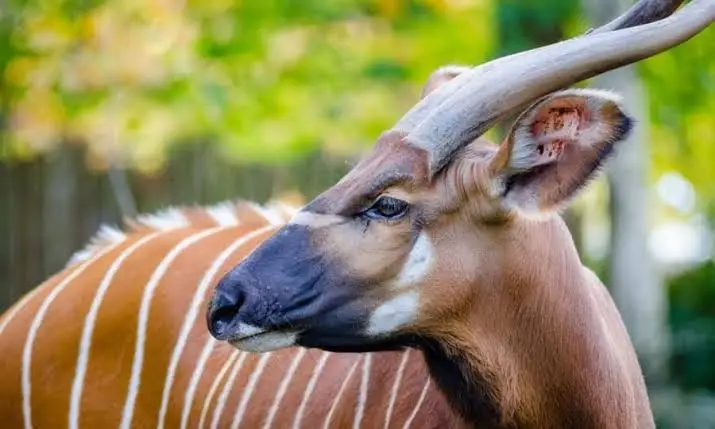The mountain bongo is one of Kenya’s most elusive treasures, a rare antelope that inhabits the misty montane forests of central Kenya. Shy and nocturnal, it is difficult to spot, which makes every encounter unforgettable. Its reddish- brown coat with black, white and yellowish stripes, together with the long spiral horns carried by both males and females, make it a true jewel of the forest. Once numbering around 500, the population dropped to fewer than 100 due to habitat loss, disease and poaching, placing it among Kenya’s most endangered animals.
In 2004, the United States returned 18 mountain bongos to Kenya. These were descendants of animals taken abroad in the 1960s and became the foundation of a breeding and reintroduction program that gave new hope for the species. In February 2025, the United States also donated additional 17 mountain bongos, further strengthening conservation efforts. Today, the mountain bongo survives only in a few forests, including the Aberdare Range, Mount Kenya, the Mau and Eburu.
Visit the Mawingu Mountain Bongo Sanctuary
 The best place to experience the mountain bongo up close is at the Mawingu Mountain Bongo Sanctuary located in Nanyuki within the Mount Kenya Wildlife Conservancy. Set on 776 acres of indigenous forest, this sanctuary was created specifically for the mountain bongo, which were brought back to Kenya from the United States. A visit here not only gives you the chance to see these magnificent antelopes but also to support one of Kenya’s most vital wildlife conservation programs.
The best place to experience the mountain bongo up close is at the Mawingu Mountain Bongo Sanctuary located in Nanyuki within the Mount Kenya Wildlife Conservancy. Set on 776 acres of indigenous forest, this sanctuary was created specifically for the mountain bongo, which were brought back to Kenya from the United States. A visit here not only gives you the chance to see these magnificent antelopes but also to support one of Kenya’s most vital wildlife conservation programs.
What the Mountain Bongo feeds

Mountain bongos are browsers feeding on leaves, bark, roots and forest undergrowth. Their feeding habits make them vital to forest ecology, as they aid in seed dispersal and help maintain a healthy ecosystem.
Threats to Their Survival
In the wild, natural predators once included leopards and hyenas, but today the greatest threats are humans through poaching and habitat destruction.
Cultural Significance
For local communities, sightings of a mountain bongo are rare and often regarded as spiritual encounters, adding profound cultural meaning to their already great ecological value.

